Human intervention changed life in Narragansett Bay. But could it save the quahog?
Editor's note: This is the second story in a three-part series on the decline of Rhode Island's quahogs
WARWICK – David Ghigliotty looks every part the bullraker, with a weatherbeaten face, thick shoulders and calloused hands as hard as a clam shell.
He started raking for quahogs as a teenager during the good times of the 1980s.
But they wouldn’t last.
With a glut of cheap clams flooding the market from Florida and Virginia, prices sagged. And with so many shellfishermen tapping Narragansett Bay, beds that once were rich in quahogs started to run dry. A year-long shutdown of clamming in Greenwich Bay because of contamination from leaking septic systems didn’t help.
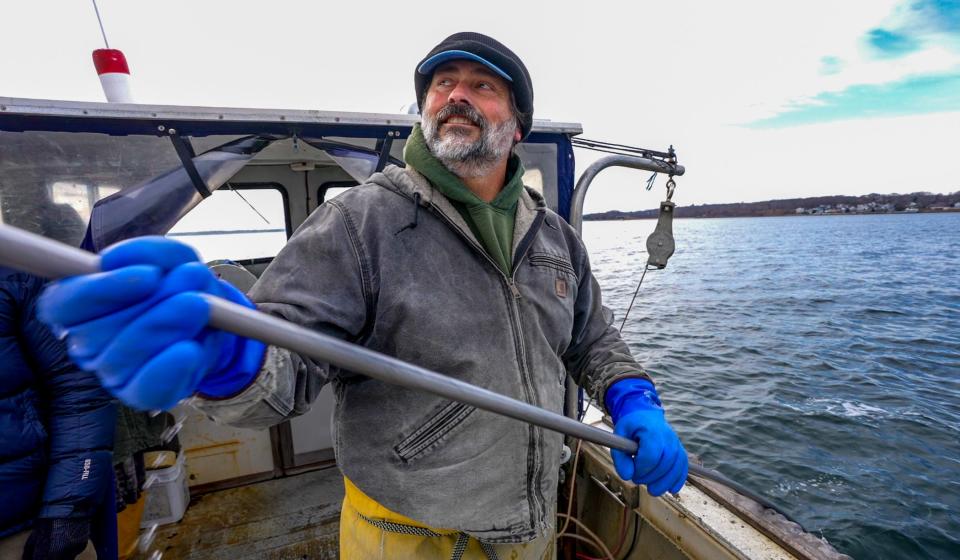
Landings crashed in the mid-'90s and, while there's been a small recovery, the overall trend has been downward. Despite inflation, wholesale prices for clams haven’t changed much in four decades.
Shellfishing was the only job Ghigliotty had ever known. But with a baby daughter at home as the slump began, he needed to find something that paid better. He studied to become a diesel mechanic and got a job with Munroe Dairy.
He kept raking when he could and never gave up his shellfishing license, but he missed the water – and missed being his own boss. Within a few years, he was back on the Bay full-time. As he tells the story, Ghigliotty repeats the words of one old-time quahogger who told him, “Once you get into this, you’ll be unemployable.”
He was right. Ghigliotty hasn’t left the water since, even as it’s gotten harder and harder to find clams.
One of the few rakers on the Bay working year-round, he's been around long enough to remember when Greenwich Bay used to freeze over. Rakers used saws and axes to cut holes in the ice so they wouldn't miss their daily quotas.
These days, the only mornings Ghigliotty doesn’t head out are when the wind is blowing hard. In mid-December, as he coordinates a trip out on the Bay with a reporter and photographer, he’s blithely undeterred by forecasts of a cold front about to slam into Rhode Island.
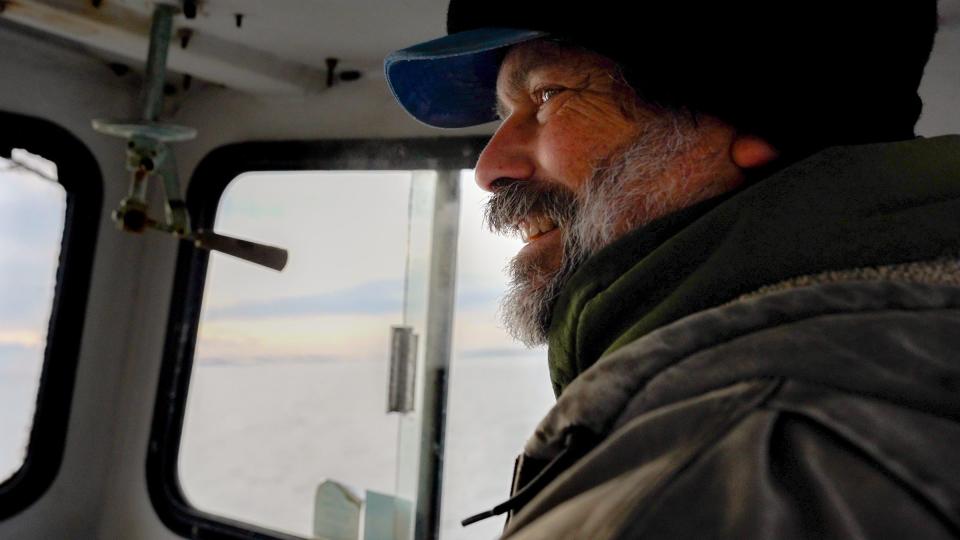
“There's still plenty of time to come out digging before the real cold winter comes in,” he texts. “LOL”
It’s below freezing when he motors out of Angel’s Marina in Apponaug and steers past Oakland Beach into Greenwich Bay.
Despite his good humor, he has low expectations for the day.
'A grand ecological experiment'
The advent of running water in Providence 153 years ago forever changed Narragansett Bay. For the first time in the history of the watershed, toilet waste would be flushed directly into the estuary.
The environmental implications of the event – heralded by the ringing of church bells and a 13-gun salute – would be realized only later.
“The widespread pollution of Narragansett Bay began with a great celebration on Thanksgiving Day, 1871,” the late University of Rhode Island oceanographer Scott Nixon would write.
Even as plants were built to treat raw sewage and take care of the worst of the visible pollution, invisible nutrients borne by effluent flowed into the Bay, throwing off the natural balance of its waters. The long-term impact has been so big it's been compared to geoengineering.
Humans produce nitrogen as their livers process proteins. It's filtered out by the kidneys and released mainly as urine, totaling about 10 pounds a year per person. Nitrogen is the main ingredient in fertilizers and it stimulates the growth of the tiny marine plants called phytoplankton, just as it does the shrubs in our gardens.
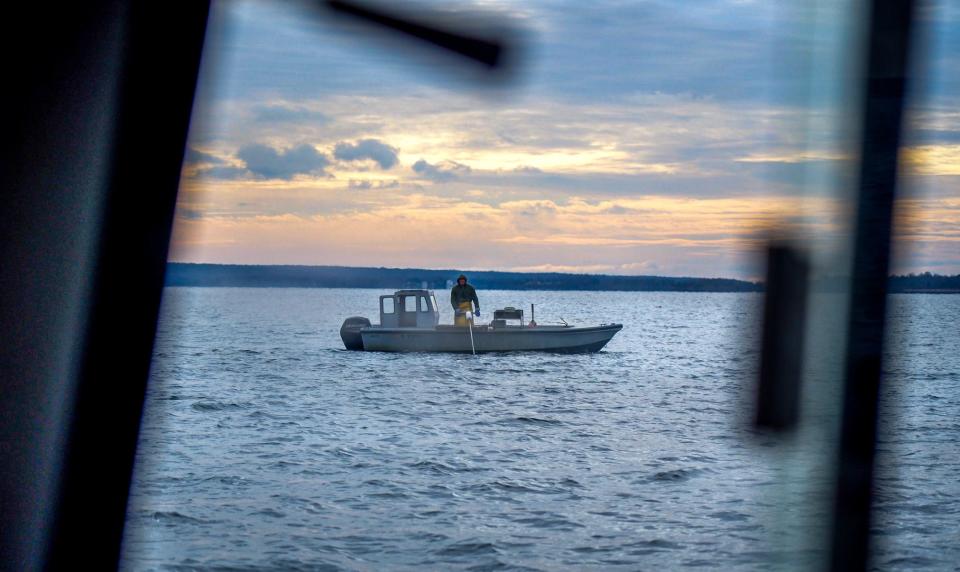
When its concentration in a body of water is too high, nitrogen causes eutrophication – overfertilization that leads to uncontrolled algae production, a drop in oxygen levels, and, in extreme cases, the death of marine life. It's a very different effect from that of the normal growth of algae in the Bay's winter-spring bloom, which is good for the ecosystem.
Nitrogen levels in Narragansett Bay rose as the watershed's population in Rhode Island and Massachusetts grew through the 1960s before leveling off. At the time of the Greenwich Bay fish kill in 2003, treatment plants were responsible for two-thirds of the load in Narragansett Bay. The reductions set in motion by that event were an attempt to turn back the clock.
But even Nixon warned of the potential for unintended impacts on an ecosystem that had been shaped by the artificial conditions. He called the reductions a “grand ecological experiment.”
Could more nitrogen be released back into Narragansett Bay?
Nitrogen levels in wastewater effluent have continued to fall in the decade since sewage treatment plants around the Bay met the 50% reduction ordered by the state. Today, levels are 75% lower than they were 20 years ago. It has shellfishermen asking if the experiment has gone too far.
Their argument is catching on. Candace Oviatt, a URI oceanographer who worked alongside Nixon and who supports the intent of the reduction plan, has proposed a compromise.
She makes the case for allowing the release of more nitrogen from the plants in the cold-weather months, in time to fuel the natural winter-spring bloom of phytoplankton that is so important to the quahog spawning season. Because tides and currents flush out the water in the Bay every few weeks, there would be no threat of excess nutrients being present in the summer when the threat of low-oxygen conditions goes up, says Oviatt.
As for the potential impact of dialing up nutrients at the right times, she points to big sets of quahogs that followed the floods of March 2010, which washed massive amounts of runoff and untreated wastewater into the Bay, and a historically large winter-spring algae bloom in 2018 that came several months after a series of big rainstorms hammered the state.
On the face of it, trying to ramp up the food supplies for quahogs when they’re expending so much energy during reproduction sounds like a good idea.
“I think that would be a great help to us,” quahogger Jody King, a member of the General Assembly’s Quahog Commission, said after Oviatt presented her proposal to the group.
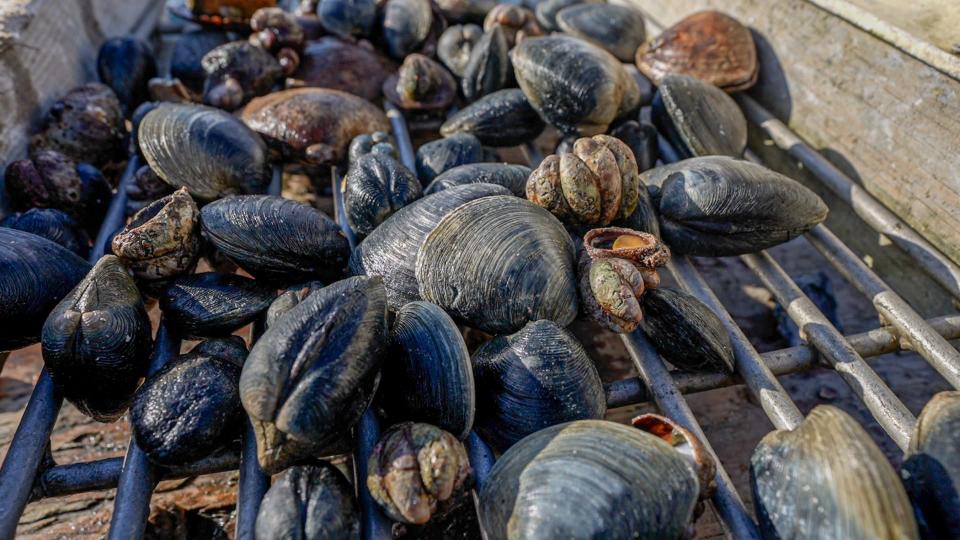
Whether it’s possible, however, is another matter. Treatment plants rely on a stew of live bacteria and other microorganisms to remove nitrogen from wastewater and release it into the atmosphere as a gas. Their activity dips naturally when the temperature drops. As a result, nitrogen releases climb.
The increases are allowed by the state as long as levels are reined in again by the summer. That tends to happen in April or May, as temperatures rise and the microorganisms become fully awake again.
Achieving even higher winter flows of nitrogen would be a difficult task, requiring some sort of intervention with the mix of microorganisms.
“We cannot just turn off a switch,” said Walter Palm, director of environmental science and compliance with the Narragansett Bay Commission, which operates the two largest treatment plants in the state.
Any interference with the process could impair a plant’s ability to get under the summer nitrogen cap, which is set by state law. The only way the DEM can adjust that cap is if the Bay is meeting standards for a reduced number of days with the type of low-oxygen conditions that can lead to fish kills.
“Right now, we’re not meeting [dissolved oxygen] standards,” said Joseph Haberek, administrator of surface-water protection for the state Department of Environmental Management.
But quahoggers insist those standards are arbitrary.
“It’s not something that’s set in stone,” said commission member Mark Johnson, a shellfisherman. “It’s something the DEM has put in place.”
Climate change is also altering life in Narragansett Bay
If the contention by quahoggers that the Bay is too clean sounds familiar, it’s because it’s been made before.
A few years ago, lobstermen argued that a lack of nutrients caused the dwindling numbers of the bottom-dwelling crustaceans in the Bay. Fishermen have said something similar to account for the disappearance of winter flounder, a once-ubiquitous flat fish that also lives in the sediments.
Scientists, however, counter that there are larger forces at play tied to climate change that are driving a widescale shift in the diversity and abundance of animal life in the Bay.
They've found strong evidence that the declines of certain species have been caused by warming waters, an influx of predators new to the Bay, and a disruption to phytoplankton production that has been traced back to the 1970s.
Over the last 50 years, the annual winter-spring algae bloom hasn’t been as reliable as it once was, or as large. While it still occurs in some years, in others it’s all but absent. And sometimes when it happens, it’s at a time of year that may not be optimal for marine life.
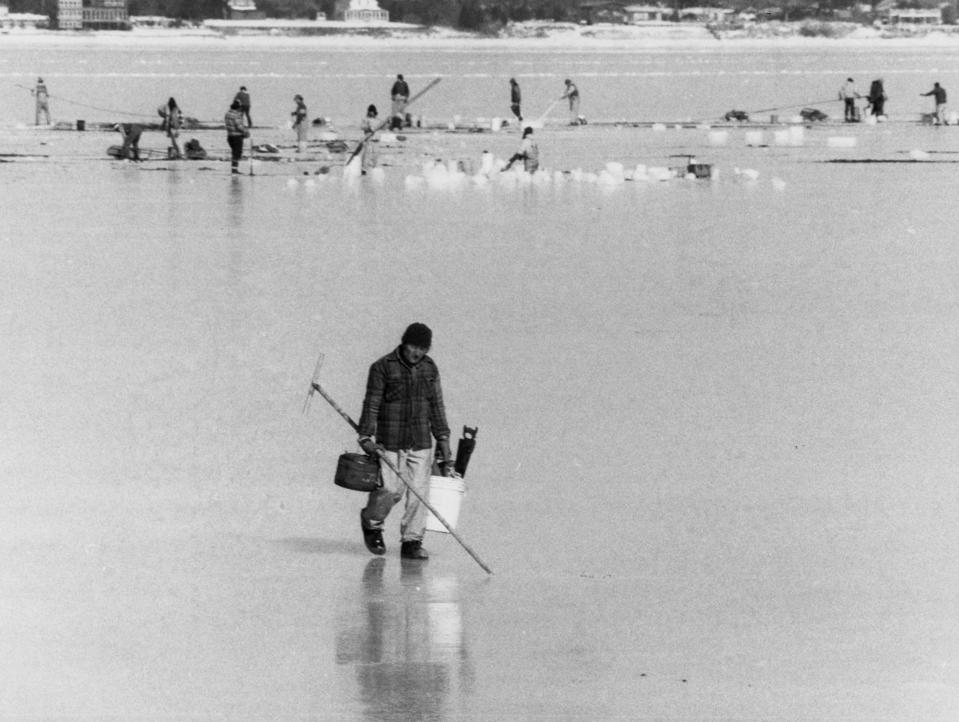
And while that may indeed mean there’s less food for lobster, flounder and quahogs on the Bay floor, the changes to the bloom started decades before policymakers even considered slashing nitrogen discharges.
“I cannot in good science say that the decrease in productivity in Narragansett Bay is driven solely by nitrogen,” Robinson W. Fulweiler, a biogeochemist at Boston University who studied under Nixon, told the commission. “Because the decrease happened before that.”
She lists a host of changes tied to climate that more closely track the shifts in the bloom. They include an increase in the number of cloudy days, which could interfere with photosynthesis; a decrease in wind speeds, which could inhibit mixing throughout the water column and make it harder for algae to sink to lower depths; and warming winters – the days of the Bay freezing over are long gone – that encourage the proliferation of tiny marine animals called zooplankton that graze on the algae at the water’s surface before they reach other organisms below.
Oviatt doesn’t disagree, conceding that climate impacts could eventually wipe out the bloom entirely, making any positives that come from bumping up nitrogen levels in winter temporary at best.
“It’s not a long-term solution,” she said.
As Fulweiler finished a presentation to the commission, she pulled up a slide showing the long-term decline in quahog landings overlayed with a jumble of arrows representing the changes in all the climate indicators over the same period, from increases in air temperature and rainfall totals to changes in ocean currents. It was impossible to make sense of the graph.
Which is the point, said Fulweiler.
“While as a human, I know that I would prefer to be able to be like, ‘Boom, it’s this. This is the smoking gun. We can solve this with this,’ I have found both in life and science that is rarely the case,” she said. “It is my opinion that there are many different things happening here in Narraganset Bay that are changing the distribution and abundance of quahogs, and it’s not just one thing.”
'That doesn't even cover my gas'
After Ghigliotty exits Greenwich Bay, he heads north past Rocky Point State Park and turns off the motor above one of his favorite quahog beds near Conimicut Point.
Before leaving this morning, he made sure he wouldn’t be alone. On such a cold day, it’s prudent to make sure a tow is available in case his skiff breaks down. In the past, he would have been able to count on another 50 boats being out with him on a winter day. Today, he counts fewer than 15 other quahoggers at work.
Their voices crackle over the radio, ribbing each other for one thing or another. One man complains about the finger-numbing temperatures.
“You need a hug to warm you up?” comes the response.
Ghigliotty positions his boat broadside to the current to ensure that the drift of his boat will do most of the heavy pulling for clams.
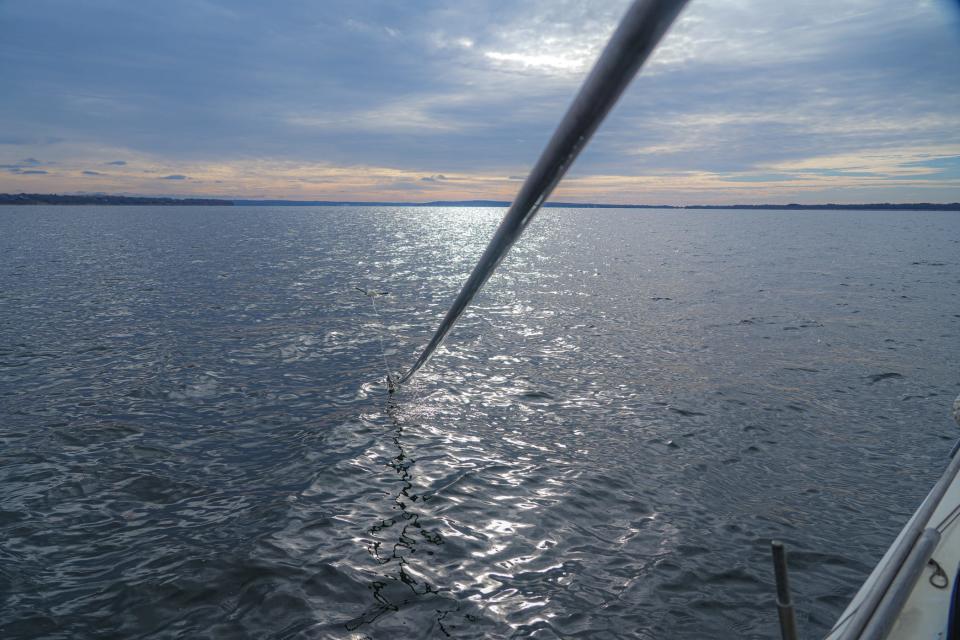
He starts to assemble his bullrake. He slides two aluminum tubes, called stales, together to make a long handle that will allow him to reach the bottom 17 feet below. The rule of thumb is to make the handle twice as long as the water is deep.
He keeps several rake heads on hand, each designed for different conditions and uses, including one for hard bottom, another for soft bottom and one with a bigger basket.
He chooses a favorite, clamps it to the handle and gets to work. A wooden board protects the gunwale as he snaps the bullrake into the bottom. The repetitive rubbing from the handle has worn deep grooves in the wood that act like oar locks, keeping the rake in place.
Ghigliotty is working in a spot where the bottom slopes down and the sediment is characterized by what he calls “sugar sand.”
The conditions should be just right for quahogs, but after an hour of work he’s pulled up no more than a few dozen.
“What you’re looking at in the tray is worth about fifteen dollars,” he says. “That doesn’t even cover my gas.”
Tomorrow: What's next for RI’s disappearing quahogs? The future is uncertain.
This article originally appeared on The Providence Journal: Is Narragansett Bay too clean for RI quahogs? Why clam is disappearing

